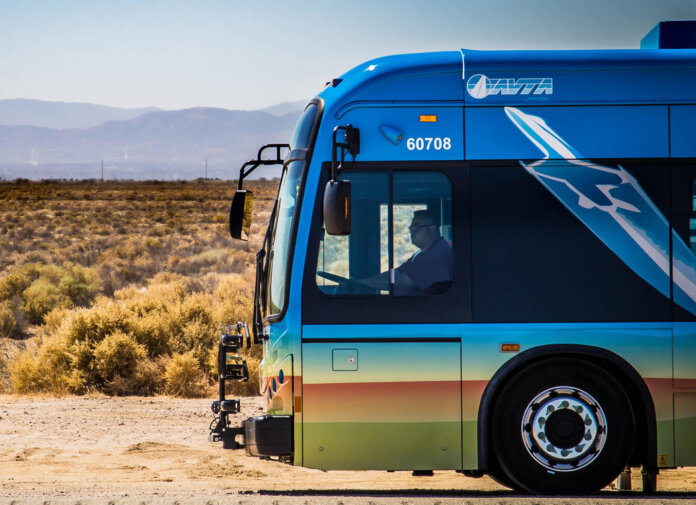WAVE, a subsidiary of Ideanomics and a high-power inductive charging solution provider for medium- and heavy-duty vehicles, has finalized a large, multi-million-dollar purchase order from the Antelope Valley Transit Authority (AVTA) for 28 additional wireless charging systems.
This order comes after the 2019 announcement that AVTA would become the first fully electric fleet powered by wireless chargers, a direct result of its partnership with WAVE. As the largest electric mass transit bus fleet in the U.S., AVTA currently serves a population of more than 450,000 residents in the cities of Lancaster and Palmdale as well as northern Los Angeles County, Calif.
“AVTA is committed to expanding sustainable transportation options throughout our more than 100 square miles of routes,” says Macy Neshati, CEO of AVTA. “By partnering with WAVE in 2019, we were able to accomplish the incredible milestone of becoming the first fully electric fleet powered by wireless chargers, but we’re not stopping there. We are continuing to build out and invest in our WAVE charging system to be bigger and better than ever.”
WAVE was wholly acquired by Ideanomics in January 2021 and allows transit agencies to electrify their fleets with in-route charging, which reduces vehicle weight, increases passenger capacity and extends a vehicle’s range. There is no need for manually attached power conductors or above ground charging equipment, eliminating both the risk associated with plug-in chargers and the visual clutter of large overhead lines. It has systems ranging from 125 kW to 500 kW and a 1 MW charger in development.
“AVTA has been a strong supporter and customer of WAVE for years, and with this order, they are doubling down on their commitment to provide green, sustainable public transportation for the people of California,” states Aaron Gillmore, CEO of WAVE. “AVTA is setting a great example for how other cities can create real change in their mass transit systems, and as this movement spreads throughout the U.S., WAVE will be ready to jump in and partner with other agencies to eliminate any concerns they may have with range limits when converting to electric fleets.”





